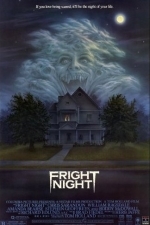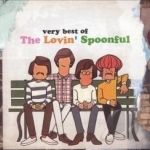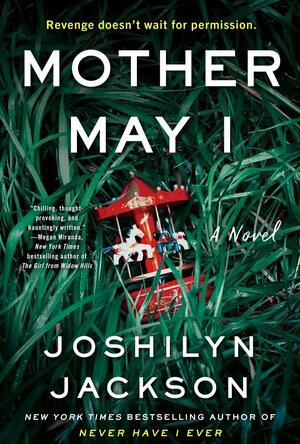Purple Phoenix Games (2266 KP) rated Dingo's Dreams in Tabletop Games
Mar 25, 2020
In Dingo’s Dreams, the goal is to guide your spirit animal through the dream world and back home before your opponents do. How do you do that? By being the first to get your dreamscape to match the dream card pattern. To setup the game, each player takes the 25 tiles of their chosen animal, and creates a 5×5 grid in front of them. The tiles are double-sided, and the side with the animal should be face-down. There will be 1 extra tile, with the animal on both sides, which should be kept to the side. The Walkabout cards are shuffled and placed in a face-down deck, and a single dream card is revealed. Each turn of the game has 2 phases: Walkabout and Dreamtime. In the Walkabout phase, a card is revealed from the Walkabout deck and all players find the corresponding tile in their grid and flip it over so the animal side is face-up. In the Dreamtime phase, all players will take their extra tile and place it at the end of any row/column, thus forcing that line of tiles to shift over and push out a different tile. Play continues until one player has manipulated their grid to match that of the dream card. Once you do that, call out the name of your animal (Dingo!) and you win!
The rules and gameplay of Dingo’s Dreams are relatively simple, but how does it perform overall? It’s a pretty light game, but it does require some strategy. It takes some creative manipulation to shift your grid to victory. You have to be thinking a turn or two in advance to see if you can setup your grid for maximum benefit. That being said, the randomness of the grid setups and the Walkabout cards sometimes makes the game feel too luck-based. Yes, you do have the power to manipulate your own grid, but ultimately you are at the mercy of the cards and they can really work against you, no matter how strong your strategy is. Another drawback of Dingo’s Dreams is the lack of player interaction. This game is pretty much multi-player solitaire. Everyone is working on their own grids at the same time, and the only thing that affects you are the cards. It’s kind of a quiet and low energy game, which is not necessarily a bad thing, but it can halt the momentum of game night.
On that same note, one of the things that I do really like about Dingo’s Dreams is that it is so relaxed and simple. It makes for a great filler game and palette cleanser between some beefier games. The overall playtime is relatively short, and it can quickly be played multiple times in a row. Another great thing about Dingo’s Dreams is the option to increase the difficulty by adding Hazards. Hazards are tokens placed on certain spaces of the dream cards, and they mean that you cannot have an animal tile in that spot of your grid in order to win. It just adds another level of strategy and can up the ante around the table.
Overall, Dingo’s Dreams is a light and relaxing game that is perfect for playing between heavier games when you need a little break. Was this a good find for me at the Used Game sale? I would say so. It’s not one that I pull out at every single game night, but it’s one that I will use to introduce newer gamers to the hobby, and one that I will pull out when I just want a quiet night in. Purple Phoenix Games gives Dingo’s Dreams a fantasy-filled 13 / 18.

Easy To Use - Adobe Flash Edition
Education and Reference
App
Adobe Flash is a brilliant animation and web tool that is becoming widely used all over the World. ...

Mr Green Mobile Casino
Games and Entertainment
App
Voted ‘Online Gaming Operator of the Year’, Mr Green’s casino App is a must-download if you...

Gay Chat & Dating - Partner
Dating and Social Networking
App
Partner is a cool gay dating app for real communication only. Our superiority over other dating...

House Building Master Class
Productivity and Education
App
Take a House Building Master Class with this selection of 375 educational video lessons. Many...
Matthew Krueger (10051 KP) rated Fright Night (1985) in Movies
Oct 30, 2020
The plot: Teenage Charley Brewster (William Ragsdale) is a horror-film junkie, so it's no surprise that, when a reclusive new neighbor named Jerry Dandridge (Chris Sarandon) moves next-door, Brewster becomes convinced he is a vampire. It's also no surprise when nobody believes him. However, after strange events begin to occur, Charlie has no choice but to turn to the only person who could possibly help: washed-up television vampire killer Peter Vincent (Roddy McDowall).
While writing the script for Cloak & Dagger, Tom Holland amused himself when he conceived the idea of a horror-movie fan becoming convinced that his next-door neighbor was a vampire, but he did not initially think this premise was enough to sustain a story. "What's he gonna do", Holland asked, "because everybody's gonna think he's mad!"
The Peter Vincent character was named after horror icons Peter Cushing and Vincent Price, and Holland specifically wrote the part for Price, but at this point in his career, Price had been so badly typecast that he had stopped accepting roles in horror movies.
Holland and McDowall built a lasting friendship, and McDowall eventually invited Holland to a dinner party where he introduced him to Vincent Price, who was flattered that the part was an homage to him and commented that the film "was wonderful and he thought Roddy did a wonderful job."
Once his cast was in place, Holland got input from each of the actors and made numerous revisions to the script. Some were slight and others were major – such as the ending, which originally featured Peter Vincent transforming into a vampire as he returned to host Fright Night.
The cast could only wear them for a maximum of 20 minutes because they were virtually blind in them, and they were thick and painful, and dried out their eyes. A set was made for Stark to wear when he was in his final pursuit of Peter and Charley, but he kept tripping on the stairs. Holland told him to take one out, and he was then able to perform the scene.
Three sets were made for Amanda Bearse, but one of them caused her agonizing pain, which she initially tried to endure. When it finally became too much to bear, she took the contacts out and the crew realized they had forgotten to buff them. For the scene in Mrs. Brewster's bedroom, Geoffreys kept his contacts in for nearly 40 minutes, resulting in scratches on his eyeballs for months afterward.
For the transformation sequences, up to 8 hours were needed to prepare Sarandon's makeup.
The makeup for Evil Ed's wolf transformation took 18 hours.
On Christmas Eve, during the shooting of a scene where he is running down a staircase, Ragsdale accidentally tripped and broke his ankle, resulting in the film being temporarily put on a hold until he could recover. "
Many scenes were shot with his foot in a cast, including the scene in which Jerry comes to Charley's room to attack him. For shots in which Charley's feet were visible, the costumers slit Ragsdale's shoes in several places, slipped them on and then covered the portions of white cast that peeked through the slits with black cloth. For the scene in which Jerry is carrying Charley by the throat with one hand, Sarandon was simultaneously pushing Ragsdale along on a furniture dolly.
The shot of Jerry pulling the pencil out of his hand was achieved by having a spring-loaded, collapsible pencil glued to his palm and an eraser-tip loosely attached to the back of his hand. When he turns his hand and pulls the spring-loaded piece from his palm, out of shot a |monofilament wire jerked away the tip, so when he turns it back, it appears as though he hss pulled it straight through his hand.
Filming of the sequence with the bat was difficult for effects veteran Randall Cook, who kept winding up on film while puppeteering the creature.
Its a excellent movie.
Johnny Marr recommended track Coconut Grove by The Lovin Spoonful in Very Best of the Lovin' Spoonful by The Lovin Spoonful in Music (curated)
Purple Phoenix Games (2266 KP) rated Isla Dorada in Tabletop Games
Jun 24, 2021
Isla Dorada is a set collection, hand management, bidding, exploration, adventure card and board game from a team of designers including Bruno Faidutti and Alan R. Moon. The players are a cohesive exploration team which has crash landed on an island, and they seek the riches within. To do this, the players will be traveling around the island attempting to satisfy their Destinies and pick up treasures along the way. But not every player wants to go where the others want to go. What to do, what to do…
Follow the setup instructions in the rule book until you have a board with turn tracker discs and the players’ shared totem pawn upon the crash site. Each differently-backed card deck will be shuffled and each player will receive cards drawn from these decks as their starting collection. The youngest player will receive the first player marker and will start the game by placing the totem on a path heading away from the crash site where they would like to go and announce the amount of cards they are willing to bid (even zero cards) in order to convince the party to travel there. The game is now on!
Players will be collecting Adventure cards to be used as currency when bidding on party travel in order to fulfill goals on their personal Destiny cards. When traveling each turn, a turn marker disc will be placed on the location the party has visited in order to track the movements for said Destiny cards, which mostly have lists of areas to be visited. They will also be attempting to avoid certain areas of the island which will trigger their Curse card that awards negative points at the end of the game. During two turns of the game players will be able to draw and choose cards from the Treasure deck that will help award points at game end as well. The winner is the player who best collects a combination of completed Destiny cards, Treasures, money, and considerations for negative points from Curses.
Components. People, Isla Dorada boasts some of the best components in a game we have seen. The totem pawn and Bigfoot/Leviathan pawns are simply amazing. The art throughout the game is mesmerizing and gorgeous. So much attention to little details have gone into this production and the final product is a stunning game that you want to keep playing because the component are just so fabulous.
But the game play? It is awesome with the right game mates. If you can play this with your enthusiastic friends, each turn will be simply exciting and joyous to play. Getting friends and family members to shout at each other their bids to move the party toward Septris instead of Methritis because their Curse card is brutal is downright great entertainment. Watching paths being cut off by the Bigfoot and Leviathan and having people visibly create alternate pathways and tactics can be enjoyable as well.
So do I like this game? Yep! It has beautiful components, is somewhat easy to teach to players of all experience levels, and leaves you satisfied when the game is over. This is not a serial, “play every game night” sort of title, but with the right group and mood, this can be a dynamite experience. If you are looking for a high-energy adventure game with lots of player interaction, set out to find a copy. I do wish you good luck, though, as a copy may be hard to come by. Alas, Purple Phoenix Games gives Isla Dorada a totemic 15 / 18. At least we will always have Kilitiping…
Heather Cranmer (2721 KP) rated Mother May I in Books
Dec 21, 2020
Bree has everything and wants for nothing. She has three fantastic children, a loving husband, and plenty of money. She starts seeing an old woman that looks like a witch looking through her bedroom window and then again at her daughters' school. When her infant son keeps kidnapped from her daughters' school, it sets something sinister in motion. If Bree wants to see her son alive again, she has to agree to do some pretty messed up things. However, as Bree gets sucked in further and further, she learns some pretty crazy things about those she thought she knew.
First off, the world building for Mother May I was done so fantastically! It was so easy to get sucked into this book. I could easily imagine every little thing that happened throughout Mother May I as I was reading. The pacing was perfect. I found myself never wanting to put this book down. Not once did it ever slow down to become boring or speed up that I got lost. I wanted to make sure baby Robert was safe, and I was also frantic when he went missing and Bree was doing all she could to get him back. I didn't feel like there were any major plot twists. There are a few minor ones though. There is no cliff hanger ending, and all loose ends are tied up by the end of the book. I did enjoy how the book ended though. Mother May I definitely shows was having wealth and privilege can do for you even when you do something bad, so kudos to this book for bringing it to the forefront.
I felt that all the characters in Mother May I were well rounded and developed. It was easy to relate to Bree throughout the book. As a mother myself, I felt her fear and worry at her son being kidnapped. (That's one of my worst nightmares!) I never once blamed her for what she did to make sure her son would be safe and so she could get him back. I'm pretty sure I would do the same as she did. I loved that she came from humble beginnings as well. I loved her backstory. Marshall was such a stand up guy to help out Bree. It was obvious how much he cared for Bree. I admit that I was wary of him throughout the book. I kept waiting for him to somehow be involved in Robert's disappearance. Trey seemed like a stand up guy with how he treated Bree and how much he loved her although Trey was another one I was wary of. I also kept thinking he had something to do with Robert's disappearance. Coral was another one that I could kind of understand her hurt for what happened to her daughter. While I don't agree at all with what she did as an act of revenge (not a spoiler), I knew her heart was hurting for her daughter and what she went through. Coral was a fantastic antagonist though.
Trigger warnings for Mother May I include rape, sexual situations, drug use, drinking, murder, suicide, death, child murder, swearing, and kidnapping.
With such wonderful characters and fantastic world building, Mother May I is a book deserving of such high praise. It goes to show how unfair the world is and how money talks in a well done story. I would definitely recommend Mother May I by Joshilyn Jackson to those aged 18+ who are after a book with a fantastic storyline and a great cast of characters.
--
(A special thank you to William Morrow for providing me with a paperback ARC of Mother May I by Joshilyn Jackson. I was under no obligation to write a review.)

PhotoMemes
Lifestyle and Photo & Video
App
PhotoMemes gives all your photos a new life: organized automatically into beautifully designed theme...




